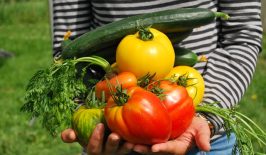Trees don’t just make our cities more beautiful, they act as natural air-pollution filters, cool urban temperatures, reduce noise and smell, and attract birds: thanks to trees, our ever more congested cities can be much more pleasant places in which to live. How are world cities doing when it comes to trees? What are the cities with the highest tree density? Treepedia tell us just that.
Treepedia was born in 2016 to map the the density of trees in major cities. Through its Green View Index’ (GVI) – which uses google street view images to capture trees at street level, Treepedia captures diffuse tree cover around the city – rather than trees in parks or designated green areas – and is therefore a tool to convey the real experience of how green a city is at neighbourhood level.
A project of MIT’S ‘Senseable City Lab‘, in collaboration with the World Economic Forum, the Treepedia GVI uses a scale of 0-100 to indicate the percentage of canopy cover in a specific location. Their maps allow us to see how green a city is, and also to compare green canopies of multiple locations.
A tool for participative urban planning
Currently 23 cities from different continents have been indexed, however Treepedia makes it clear that their aim is not “rating cities to compete in a green olympics”. Rather, they want to engage ordinary people in urban vegetation improvements, ensuring that urban planning is accessible to those outside of the field also, and to support a more participative process whereby resident can affect changes at their neighbourhood level.
Which are the greenest cities?
Here are the 15 greenest cities and their tree-cover density (GVI):
15. Tel Aviv, Israel — 17.5%
14. Boston, Massachusetts — 18.2%
13. Miami, Florida — 19.4%
12. Toronto, Canada — 19.5%
11. Seattle, Washington — 20%
10. Amsterdam, Netherlands — 20.6%
9. Geneva, Switzerland — 21.4%
8. Frankfurt, Germany — 21.5%
7. Sacramento, California — 23.6%
6. Johannesburg, South Africa — 23.6%
5. Durban, South Africa — 23.7%
4. Cambridge, Massachusetts — 25.3%
3. Vancouver, Canada — 25.9%
2. Sydney, Australia — 25.9%
1. Singapore — 29.3%
Treepedia helps tapping into trees as powerful and cost effective allies
Although increasing tree-cover will need to take into account specific urban settings (climate, habitat, human density) for maximum positive impact , cities are increasingly realising that trees can be a powerful and cost effective ally to help them combat air-pollution, mitigate climate change, regulate local and regional hydrology and prevent floods, as well as means to support biodiversity. And while it remains to be seen how quickly green canopy policies are actually taken up and implemented, certain is that by engaging citizens, a tool such as Treepedia can help speed up the process.
In the video below the benefits of urban trees are nicely laid out:









